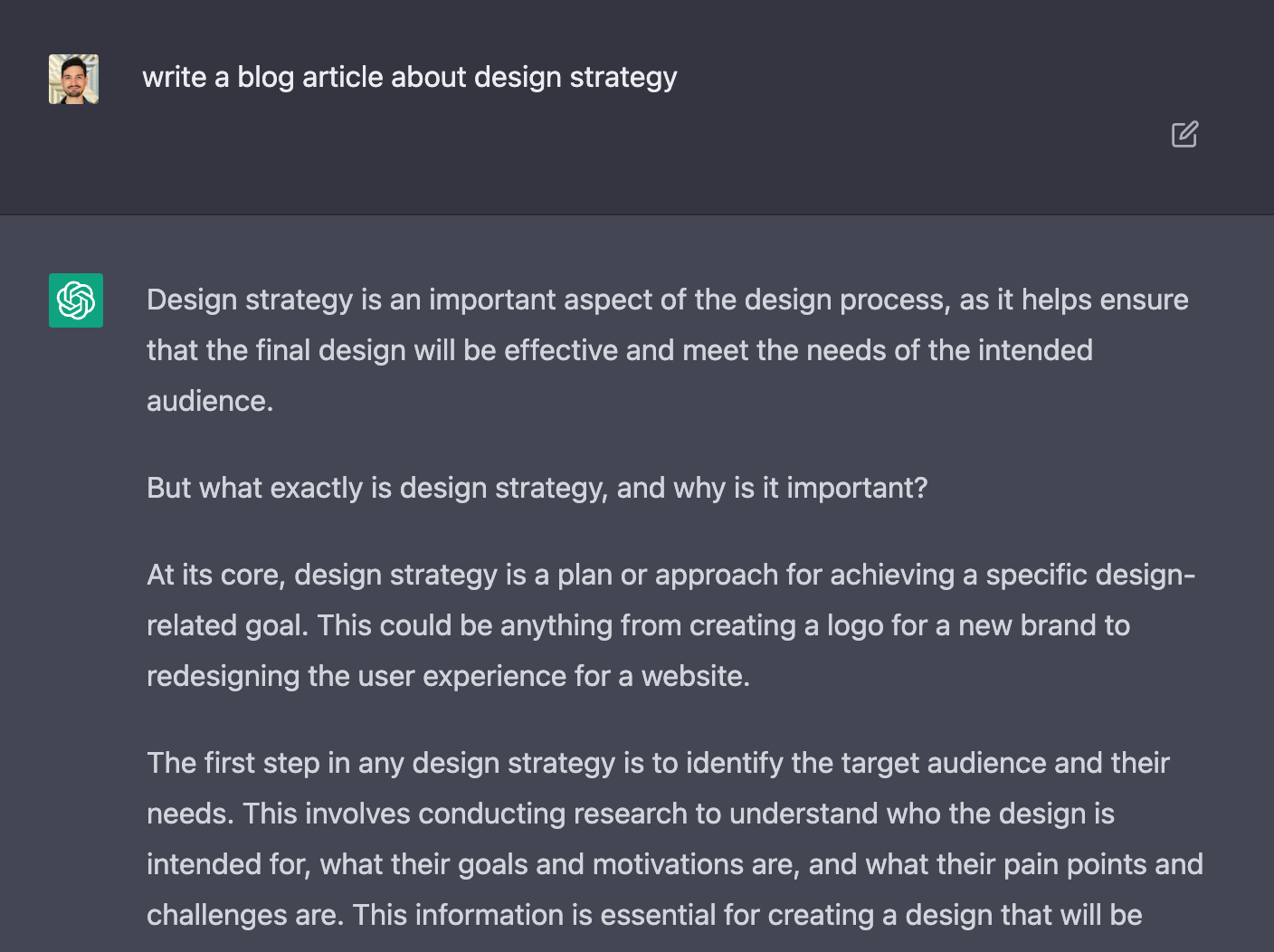OpenAI wrote this article about Design Strategy
Thought I'd play around with OpenAI's Chat CPT and ask it to write a blog article about design strategy just for fun.
Thought I'd play around with OpenAI's Chat CPT and ask it to write a blog article about design strategy just for fun.
Here's what it came up with (full text below)

Design strategy is an important aspect of the design process, as it helps ensure that the final design will be effective and meet the needs of the intended audience.
But what exactly is design strategy, and why is it important?
At its core, design strategy is a plan or approach for achieving a specific design-related goal. This could be anything from creating a logo for a new brand to redesigning the user experience for a website.
The first step in any design strategy is to identify the target audience and their needs. This involves conducting research to understand who the design is intended for, what their goals and motivations are, and what their pain points and challenges are. This information is essential for creating a design that will be relevant and useful to the target audience.
Next, the design team must define the objectives and constraints of the design. This involves setting clear goals for the design, such as increasing brand awareness or improving user engagement, and identifying any limitations or restrictions that must be taken into account. This can help ensure that the design team stays focused and on track throughout the design process.
Once the target audience and objectives have been identified, the design team can develop a plan for creating the design. This may involve sketching out ideas, creating prototypes, and conducting user testing to gather feedback and refine the design. The goal is to create a design that will meet the objectives and satisfy the needs of the target audience.
In summary, design strategy is a crucial part of the design process, as it helps ensure that the final design will be effective and meet the needs of the intended audience. By conducting research, defining objectives and constraints, and creating a plan for the design, the design team can create a design that delivers a positive experience for the user.
It was interesting to me that it was able to do an okay job and surfacing some of the most important elements of a design strategy.
The role of AI in creative work
Everyone is talking about how AI is going to replace you.
And honestly, that discussion has been going on since the beginning of the industrial revolution.
The way I see it, AI —and all technology in a broader sense— are tools.
Tools that are meant to speed up tedious work and augment your capabilities. As a designer, I welcome the help these tools bring.
I can quickly get started on an article, get the gist of what "the internet" knows about a certain topic, and mold it with my experience to express my thoughts.
Where I would like AI to make progress
I have always dreamed of an AI tool that, for example, produces a standard Figma flow for an e-commerce checkout, or for an account creation form.
Standard flows are repetitive work that could be better spent speaking with users, adding delightful details to an experience, and elevating the work.
Food for thought 🧠